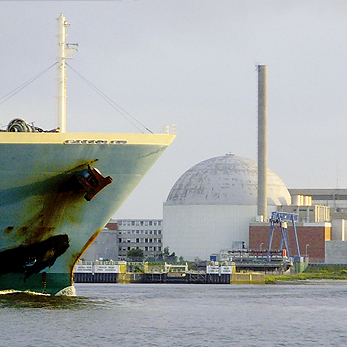What has been done?
Efforts have focused on pollution from nuclear installations
OSPAR’s work to prevent and reduce pollution from radioactive substances has focused on the nuclear sector and the application of best available techniques (BAT) to minimise pollution of the marine environment by radioactive discharges. Examples of BAT for the nuclear sector include treatment systems for converting radionuclides in effluents into solid waste for disposal. Even when BAT is applied, low level radioactive discharges into the environment are usually unavoidable. Such liquid discharges and emissions to air are regulated through licences from the authorities. Regular reports to OSPAR indicate that the use of BAT is stipulated in national legislation and regulations and that management systems are in place to minimise radioactive discharges from the nuclear sector. OSPAR has established common tools and methods for monitoring and reporting discharges from nuclear installations, as well as baselines against which to monitor progress in reducing the amount of radioactive substances discharged by the nuclear sector. Statistical methods to evaluate progress towards achieving the objectives of the Radioactive Substances Strategy have also been identified for discharges from the nuclear sector. The work of OSPAR complements that by other international organisations, such as the EU and the International Atomic Energy Agency (IAEA).
OSPAR has not developed BAT for reducing discharges of radionuclides from the non-nuclear sector, but started collecting data on annual discharges from non-nuclear sources in 2005.
Environmental quality criteria are not yet developed
Traditionally, radiological protection has been based on the protection of humans. However, it is now recognised that environmental protection must be addressed in its own right and that tools must be developed to assess radiation exposure and risk to marine organisms. OSPAR has assessed doses to marine life from the most significant radionuclides and will develop environmental quality criteria for the marine environment in the light of progress in other international forums. OSPAR is currently reviewing the development by the International Commission on Radiological Protection of a framework to demonstrate radiological protection of the environment, as well as the development of policy and regulatory approaches by other international bodies, such as the EU and the IAEA. These organisations, together with countries and other key organisations (the UN Scientific Committee on the Effects of Atomic Radiation, the International Union of Radioecology, the Organisation for Economic Cooperation and Development), participate in the comprehensive IAEA Plan of Activities on the Radiation Protection of the Environment.

